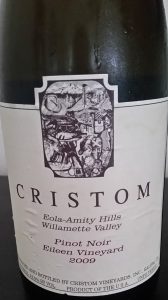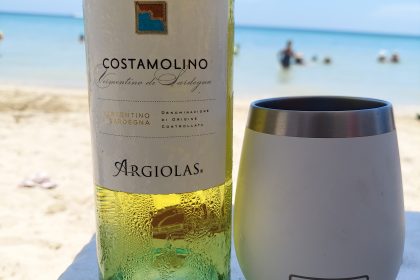As you probably have noticed, I’m taking the ‘Big Ones’ out early because there is so much availability of them, so afterwards we can focus on the more difficult grapes. Pinot Noir if I had to define it in one word I would say it’s a treat. Now that I’ve reduced it to one word, I’m going to go ahead and use plenty more adjectives. There is so much to this grape, it’s versatility across different terroirs, it’s transformation with age, the capacity to explode in your face with bouquets of elegant aromas and I could go on. And unlike Cabernet’s versatility,in my experience, Pinot Noir is more of a cavalier on palate no matter where it’s planted.
As per the cool facts, I truly enjoy one of the nicknames for this grape, cool fact number 1, The Heartbreak grape. We all read about it’s thin skin (this grape probably can’t take a joke), and high level of attention, it’s requirement of excellent weather conditions in order for it to flourish, but we don’t really think enough how tough it must be for a grower. One mistake and you might as well make some medium-bodied sangria with it. Hence the name. Just thinking about the amount of people that have suffered loss because of it to get that name and it kind of makes you walk like 20 feet away from them while sight seeing in a vineyard.
Like I mentioned before the grape is grown in many places. Well all know France uses the grape a lot particularly in Burgundy and we all know California is second place in growth but what I learned recently is that, cool fact number 2, Germany, a country who in my very limited experience I know mostly for white wines is the top 3rd grower of Pinot Noir known as spatburgunder with nearly 28,000 acres planted. Seems there’s a lot for me to learn about Germany still.
There are many things to say about Pinot Noir but most of them are common knowledge. I usually like to find nuggets of information that aren’t that common like for example, cool fact number 3, there are so many clones of Pinot Noir and that is important because it creates a variation in both quality and taste. So it’s not enough to identify if the grape is PN, but to know what type of clone it comes from, now that’s a task for some Indiana Jones type professional wine smeller.
So now to my contact with the grape. If I wrote down every amazing Pinot Noir I’ve had I could dedicate an entire blog to that so I just went with something that left a good memory.
 The Pinot Noir I selected as my evidence for the 3rd grape of my 500 grape tour is the Cristom Eileen Vineyard 2009. From Eola-Amity Hills in Willamette Valley this wine is off the charts. Our good pal RP gave it 93 points which is not to shabby. Let me tell you a short story about Cristom. I was one lucky sob that got an invitation to a 2001 Burgundy vertical where I had absolutely nothing to share. I mean what could I say? It’s pinot noir and it’s french and it’s 2001? I was there just to listen, record in my memory the commentaries of the experts and enjoy the wines. My point is, there was a ringer. It was a Cristom 2001 Marjorie Vineyard and it blew the mind of many there.
The Pinot Noir I selected as my evidence for the 3rd grape of my 500 grape tour is the Cristom Eileen Vineyard 2009. From Eola-Amity Hills in Willamette Valley this wine is off the charts. Our good pal RP gave it 93 points which is not to shabby. Let me tell you a short story about Cristom. I was one lucky sob that got an invitation to a 2001 Burgundy vertical where I had absolutely nothing to share. I mean what could I say? It’s pinot noir and it’s french and it’s 2001? I was there just to listen, record in my memory the commentaries of the experts and enjoy the wines. My point is, there was a ringer. It was a Cristom 2001 Marjorie Vineyard and it blew the mind of many there.
So back to the wine itself, this wine had a great dark cherry red color with light opacity and a great nose once it opened full of red fruit like berries but had a nutty vibe going as well. This wine was fantastic without food, but with a great dish it would probably be just as great. A long elegant finish and a balance in mouth that warrants for a crisp autumn afternoon and some great music in the background. It’s a bit alcoholic with a tad over 14% but the fruit in it makes it almost imperceptible. In Puerto Rico they can be found at Bodegas Compostela.
So this makes 3 and that leaves 497 to go. I feel closer to the end already.




